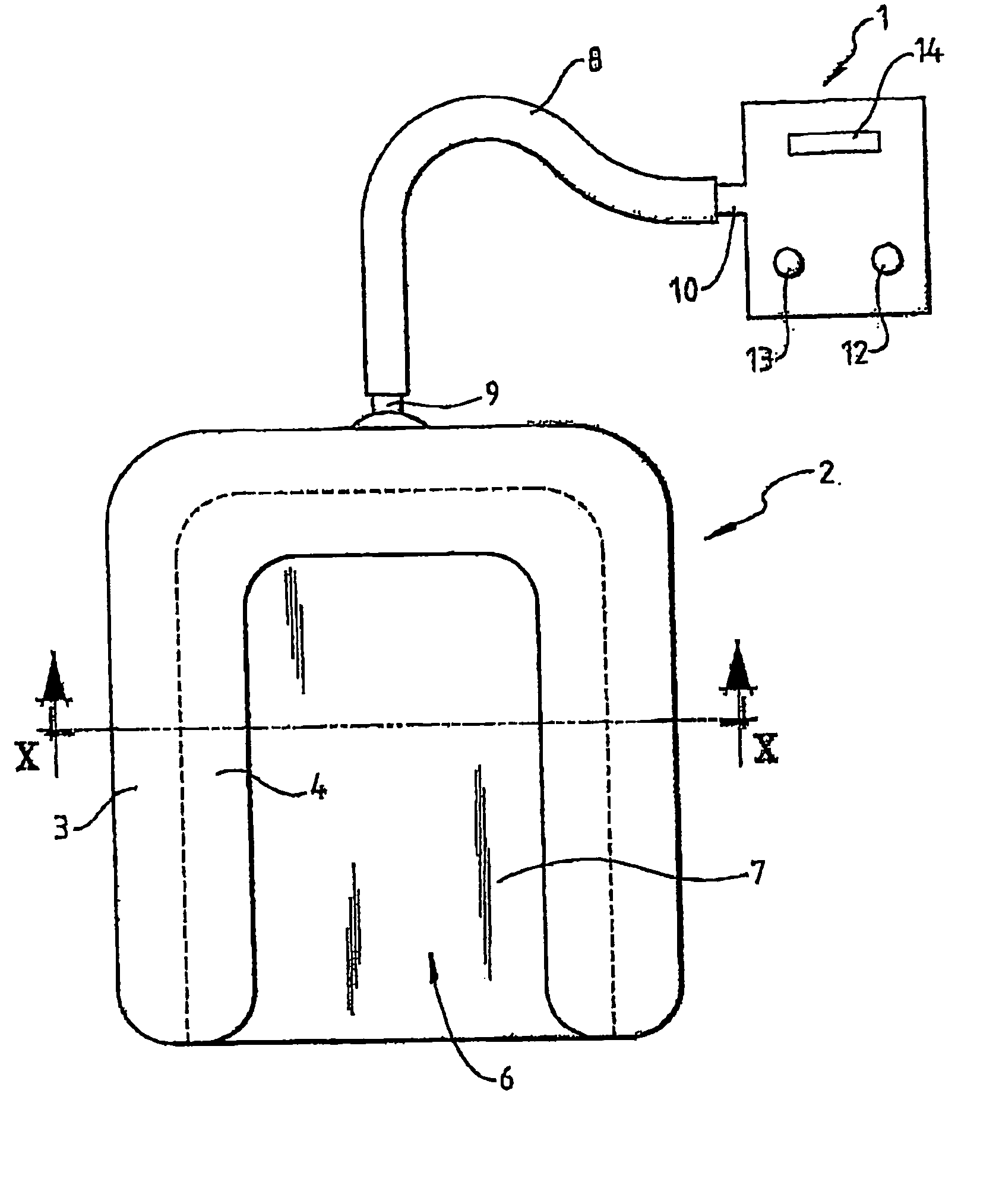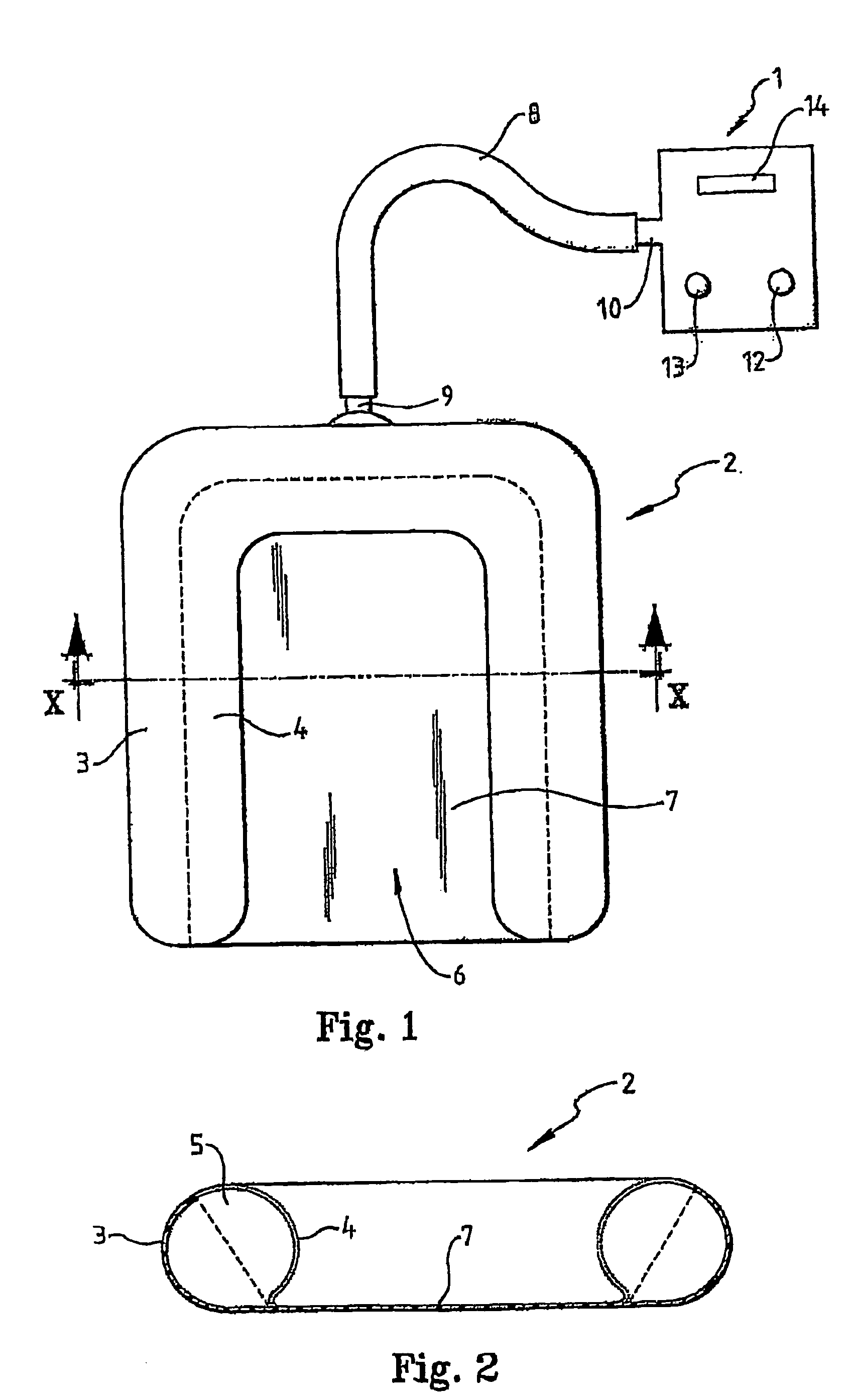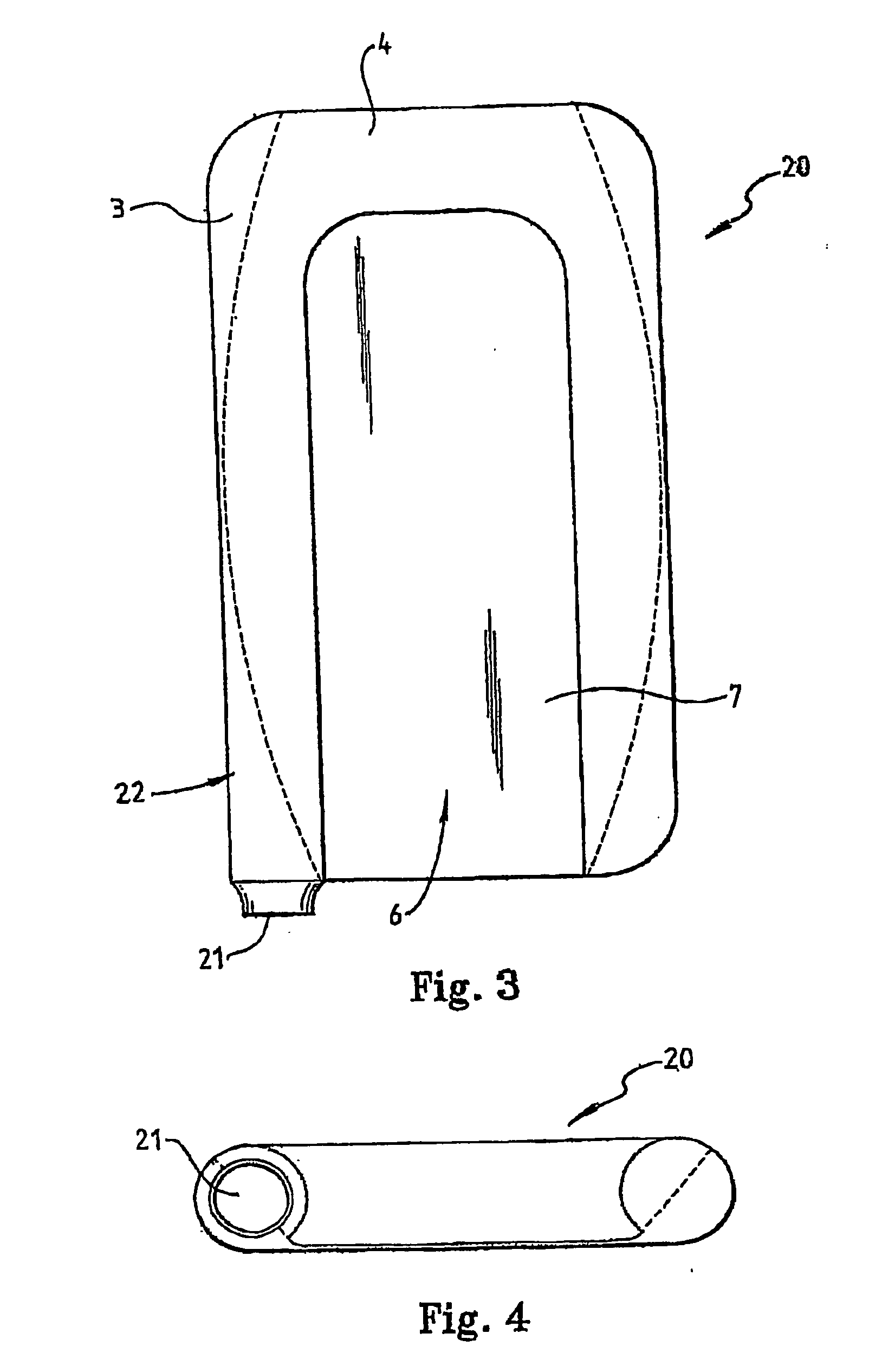Patient warming system
a patient and heating system technology, applied in the field of patient care, can solve problems such as patient chilling, patient hypothermia, and animal cooling
- Summary
- Abstract
- Description
- Claims
- Application Information
AI Technical Summary
Benefits of technology
Problems solved by technology
Method used
Image
Examples
Embodiment Construction
[0027] With reference to the figures, a patient warming system in accordance with an embodiment of the present invention is illustrated, particularly being designed for use in veterinary medicine. The patient warming system comprises a heating unit 1 (to be described in more detail later) and a patient warming blanket 2.
[0028] The patient warming blanket 2 includes first 3 and second 4 layers of material which form a hollow air space 5 between them. In this embodiment, when the warming blanket 2 is not being used, it will lie substantially flat as no air is being pumped into the air space 5. In use, however, when air is being pumped into the air space 5, the blanket “inflates” to give the profile shown in the cross-section of FIG. 2.
[0029] The first layer 3 is substantially non porous to air. The second layer 4, however, is made of porous material and is substantially porous over its entire surface area. Warm air pumped into the hollow air space 5, therefore, escapes via the entir...
PUM
 Login to View More
Login to View More Abstract
Description
Claims
Application Information
 Login to View More
Login to View More - R&D
- Intellectual Property
- Life Sciences
- Materials
- Tech Scout
- Unparalleled Data Quality
- Higher Quality Content
- 60% Fewer Hallucinations
Browse by: Latest US Patents, China's latest patents, Technical Efficacy Thesaurus, Application Domain, Technology Topic, Popular Technical Reports.
© 2025 PatSnap. All rights reserved.Legal|Privacy policy|Modern Slavery Act Transparency Statement|Sitemap|About US| Contact US: help@patsnap.com



